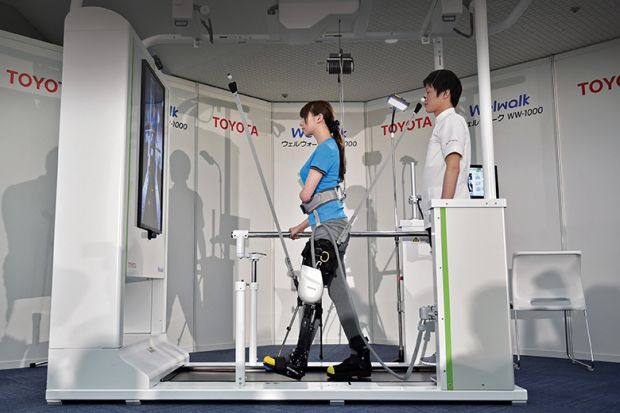View the THE Asia University Rankings 2021 results
Partnerships between academia and industry provide a great opportunity for universities to transform their research activities into concrete products. The advantage of collaboration is the increased wisdom that comes from recognising the difference between the two types of institutions, who are already leaders in their respective fields.
However, several challenges are associated with such cooperation. The hierarchy of the individuals involved is often unclear because there are two independent organisations. To minimise this issue, we have established a Center for Collaboration in Research and Innovation as a connecting function at Fujita Health University.
New product development is also an activity with a low probability of success. The chance of making an economic profit is usually less than 10 per cent and even lower for the most unconventional new products.
At Fujita Health University, a medium-sized private medical institution, we have been collaborating with Toyota Motor Corporation on the development of robots to assist with daily activities since 2007. The goal was for robots to become common tools to help disabled people live more independently, exercise and participate in emotional and cognitive activities as well as to assist caregivers.
While reconciling each other’s organisational cultures, we took many detours to develop a walking exercise-assist robot. In 2016, we finally released Welwalk into market. The robot won Japan’s Robot Award in 2018, and in 2020, it became the first rehabilitation robot in the country to be covered by medical insurance. We are also developing robots with other leading Japanese companies.
From these experiences, I have learned many lessons and these are my tips for success.
First, researchers must have a clear sense of what they are looking to create and a strong desire for a new product. In our case, we longed for tools to streamline the state of labour-intensive rehabilitation medicine. Elucidating the needs of people with disabilities directly led to the formation of new concepts and, eventually, products.
Beyond that, the long, unpredictable road ahead has many trials and errors. Change after change is made and, in the process, the work is polished and brought to life.
So, my second piece of advice is that leaders of university-industry partnerships must proceed with a faith-like conviction, but also know that ideas are just the beginning and it is likely that something completely different from the original plan will be created.
Managers in industry tend to think that ideas are directly linked to results and hastily seek results. It is the role of the researcher to appease the corporate management. Of course, time is the scarcest resource, so it is natural to use agile development techniques. During the development process of our activity-assist robots, several major changes were made and a robot with a very different appearance was born.
Third, an unconscious bias in academia sees engineering as an “artificial science” and inferior to a natural science, such as physics. As a result, engineering research tends to take the appearance of applied physics research. However, an artificial scientific attitude is essential for the development of new artificial products. For example, the precision required for regular scientific treatise writing and the precision required for a product are entirely different. A walking robot is disqualified as a product if it falls once in 10,000 steps.
Fourth, diverse and talented human resources are key to creating new products as different cultures are fused. There is no reliable way to measure who will be competent but, from a researcher's perspective, university-industry collaboration is an opportunity to make use of talented and hardworking people from companies for the research tasks you want to achieve. Therefore, it is a joyful experience. At Fujita Health University, I recognise that it is my job to create a culture that allows people to enjoy this process of industry-academia collaboration.
Eiichi Saitoh is president of Fujita Health University. The institution will be hosting the Times Higher Education Asia Universities Summit from 1 to 3 June, where there will be a discussion on the best models for partnerships between universities and industry.
The THE Asia University Rankings 2021 will be published at noon BST on 2 June.
POSTSCRIPT:
Print headline: It takes two to partner
Register to continue
Why register?
- Registration is free and only takes a moment
- Once registered, you can read 3 articles a month
- Sign up for our newsletter
Subscribe
Or subscribe for unlimited access to:
- Unlimited access to news, views, insights & reviews
- Digital editions
- Digital access to THE’s university and college rankings analysis
Already registered or a current subscriber? Login








